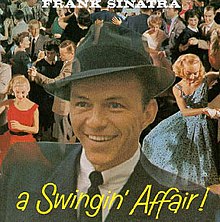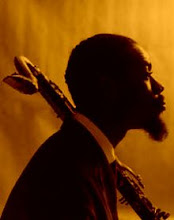I’m in Washington DC, the home of Ellington…waiting for a train :-) and suddenly, in my head I'm hearing the melody of one of Duke's most revered compositions written with Paul Francis Webster (and probably Strayhorn too), "I Got It Bad, And That Ain’t Good.” Why? well your guess...my opportunity for a little investigation, right? Here's what I found out.
The song is a rite of passage for any singer or player with a passing fancy for jazz, and it’s absolutely everywhere, beginning with this film “shortie” of Ellington’s original 1941 performance , featuring Ivie Anderson,
DukeEllington 1941-I got it bad
Uploaded by boberwig. - Explore more music videos.
and later, with Ella and Sarah and Louis and Billie and Nina and Dianne et al. Eventually we find out that Ellington, Webster (and probably Strayhorn) wrote one for the ages - a classic that has touched the collective consciousness in places where you would least expect; with Cher and Gladys Knight and Carly Simon and in a delicious twist, Frank Sinatra, who adds confident masculinity to a song originally written with a feminine lead in mind. The amazing orchestra led by Nelson Riddle doesn’t hurt Frank's effort either.

As I listen to Sinatra’s version, from a 1957 album called "A Swingin' Affair", curiosity is peaked and I start to poke around. Fittingly, "I Got it Bad…" was the cornerstone of a pioneering theater production called “Jump For Joy” – conceived and staged by Duke Ellington and Billy Strayhorn in 1941. The music and the story behind it provides a fascinating glimpse into the giddy days of exploding and new found world-renown for the Ellington organization just a few months before Pearl Harbor, the war and all the life-changes that ensued.
Ellington and Strayhorn
Jump For Joy was, in the parlance of the day, an “all black musical review” and as Ellington expressed, was intended to be “a show that would take Uncle Tom out of the theater, eliminate the stereotyped image that had been exploited by Hollywood…and say things that would make the audience think.” One minor detail - that kind of thinking in the 1940’s (50's, 60's, 70's etc) was at best, incendiary – at bottom, it proved to be life threatening for many blacks , including the cast member who was beaten up after one performance and even Duke himself, who received death threats and a place in the FBI files.
Even so, the production had a seismic effect in the artistic community - its director was Nick Castle a famous choreographer for 20th Century Fox. Charlie Chaplin gave advice at rehearsals, Orson Welles offered to make the show a Mercury Theater production and Mickey Rooney wrote a song featured in the production - “Cymbal Rockin’ Sam”. Langston Hughes was asked for a contribution and promptly wrote “Mad Scene from Woolworth’s.” Financial backing poured in from a long list of movers and shakers including film producer Joe Pasternak and actor John Garfield.
Opening night was July 10th 1941 at The Mayan Theater in downtown Los Angeles with 60 cast members, including The Ellington Orchestra, many Hollywood notables, and soon to be stars, including 19 year old Dorothy Dandridge.

The Mayan Theater - Los Angeles
Upon entering the theater you were handed a detailed program complete with a glossary of “hep” terminology translations; “groovy” was transformed from “in the know” , “fellow” became “cat” and so on. What followed was an evening of, as Ellington put it “no crying, no moaning, but entertaining, and with social demands as a potent spice”, all in rebellion against traditional representations of blacks on stage and screen. The Ellington Orchestra featured in the show is considered to be the best in the organization’s 83 year history; at the creative core were Ben Webster, (the orchestra's first regular tenor saxophonist and one of the most influential musicians of his generation) and Jimmy Blanton, who is arguably the most important jazz bassist ever. It was during this time that Blanton contracted the tuberculosis that took his life in July 1942. He was only 22.
After 3 months and 100 performances, Jump For Joy was essentially retired in the fall of 1941, until the release of a 1958 recording by Cannonball Adderley
which stripped away the theatrical aspects and added strings and a remarkable supporting cast that included Bill Evans and Jimmy Cobb – along with Adderley, Cobb and Evans were members of the Miles Davis Quintet at the time and the 3 recorded Kind Of Blue a few months prior; The Jump for Joy sessions were completed just two days after they had taken part in Miles’ recording of George Gershwin's opera “Porgy and Bess”. Ironically, Ellington’s Jump For Joy was in many ways an antithetical reaction to Porgy; consider the juxtaposition of the Porgy's "Bess You is My Woman Now" and Jump for Joy's "Uncle Tom's Cabin is a Drive In Now."
Cannonball also condensed the original 31 piece score down to ten fabulous tracks and the thrilling solo he plays on "I Got It Bad..." is inspired to say the least. But did he know the story behind the song? Who knows…but without a doubt Cannonball Adderley joined the generations of music lovers who have kept and will keep this important work of art playing for generations to come. SW


No comments:
Post a Comment